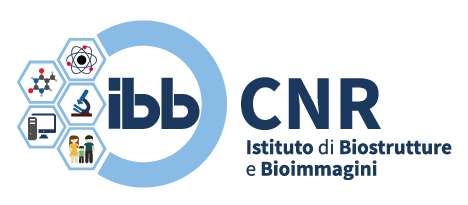Description
Objectives and expected results
To address the proposal, we will employ a multidisciplinary approach that integrates methodologies and techniques from chemical biology, peptide chemistry, molecular biology and biophysics. The primary tasks of the project are: (1) to identify, through NMR structural studies, the key amino acid residues in PrPC that drive interdomain coupling between the NTD and the CTD, providing a high-resolution description of the molecular determinants involved in this interaction; (2) based on the results from task (1), to develop a series of NTD-derived peptides/peptidomimetics capable of targeting the CTD; and (3) to determine whether, and how, NTD-derived peptides/peptidomimetics can modulate the folding dynamics of the CTD to prevent PrPC misfolding and aggregation.
The IBB Unit will collaborate to the implementation of all the core tasks of the project. Specifically, the IBB Unit will contribute to task (1) by developing an efficient expression and purification protocol for preparing recombinant PrPC domains, including forms enriched with NMR-active isotopes (15N and/or 13C), which will be utilized in NMR experiments aimed at identifying the key residues involved in interdomain coupling. The IBB Unit will also apply the expressed protein ligation (EPL) methodology to prepare full-length PrPC containing the NTD in the 15N/13C-isotope enriched form. This approach, known as segmental labeling, will allow to refine the structural analysis by NMR of the NTD dynamics in the context of the full native protein. Based on the data obtained from task (1), the IBB Unit will oversee the design and synthesis of a collection of peptides/peptidomimetics that mimic the NTD and replicate the interaction surface it establishes with the CTD (task (2)). the IBB Unit will collaborate to the screening of this collection of peptides/peptidomimetics for their ability to target the CTD and prevent PrPC aggregation. In vitro binding studies will be performed using a set of techniques, including NMR, Isothermal Titration Calorimetry (ITC) and Bio-Layer Interferometry (BLI). Circular Dichroism (CD) studies and fluorescence spectroscopy with thioflavin T will be employed to select the peptides/peptidomimetics able to prevent PrPC aggregation in vitro (task 3). Overall, this project will hopefully define a novel roadmap for the development of potential drug candidates that inhibit the formation of the misfolded isoform of PrPC, which mediates neurotoxic mechanism in prion diseases.
Project proponents
- Dipartimento di Scienze e Tecnologie Ambientali, Biologiche e Farmaceutiche (DiSTABiF) dell’Università degli studi della Campania Luigi Vanvitelli
Involved entities
Istituto di Biostrutture e Bioimmagini – CNR

